Principles of Xeriscape
Xeriscape uses seven principles to achieve water efficiency.
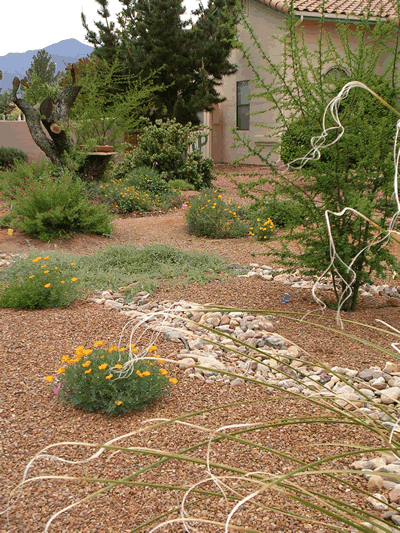
Photographer: Cado Daily

Planning and Design
Why plan? You can make a mistake on paper and toss it away. When you make a mistake in the landscape, its effect is not so easily tossed. Successful Xeriscapes begin with a good design that considers the function of the landscape and the mature size and water needs of each plant. For more information, check out Xeriscape: Landscaping with Style in the Arizona Desert.
Appropriate Turf Areas
Locate grass only in areas where it provides functional benefits, like the children's play area. Keep grass away from sidewalks, walls, and fences for easier maintenance. Avoid planting turf in oddly shaped or narrow areas that can’t be watered efficiently.
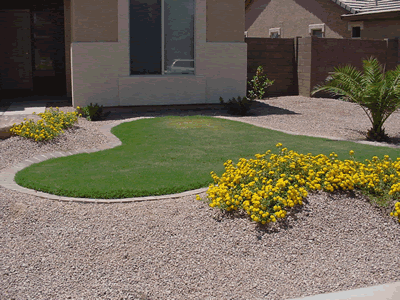
This front yard lawn with an irregular shape is difficult to irrigate and mow.
Efficient Irrigation
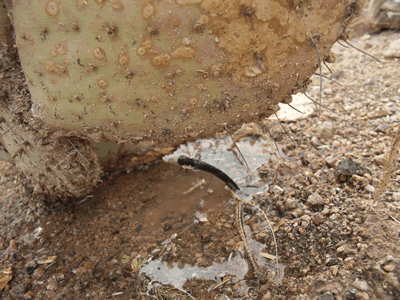
Water all trees, shrubs, and groundcovers with an efficient, low-volume drip system. Irrigate grass areas separately from other plantings. Change the irrigation schedule frequently with seasonal weather changes. For more information, check out Landscape Watering by the Numbers.
Low-Water-Use Plants
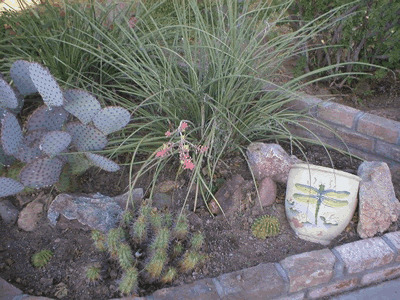
Photographer: Esmie Avila
Many low-water-use plants are available. They can be used to create a wildlife habitat or to frame a functional outdoor living space. Some provide shade and screening. Others are perfect for color, scents, texture, and accents. For more information, check out Landscape Plants for the Arizona Desert.
Soil Improvements
Most low water use plants are accustomed to our desert soils and do not need any fertilizers or soil supplements to thrive. Plants do best in well-draining soil, so loosen the soil with a trowel or pitchfork around the planting hole before installation. This will help stimulate healthy root growth. Soil amendments will be needed in grass areas or where higher water use plants are located. There is quite a variation in soil quality and composition in the Sonoran Desert, so soil amendments may be needed in unusual situations. For more information about your specific soil type contact your local County Cooperative Extension Office.
Surface Mulches
Use mulches to cover and cool the soil, decrease evaporation, reduce weed growth, and slow erosion. Use organic mulches such as bark chips or wood shavings, or inorganic mulches like rock and gravel.
Appropriate Maintenance
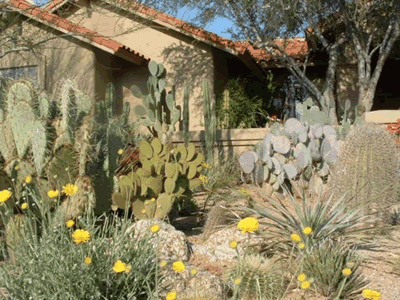
Photographer: Mike Plata
Xeriscapes require less maintenance than traditional landscapes, but to preserve the appearance and ensure water efficiency, some regular maintenance is required. Weeding, fertilization, proper pruning, and pest control will keep your Xeriscape looking good. Regular irrigation system maintenance and adjustments help save water.